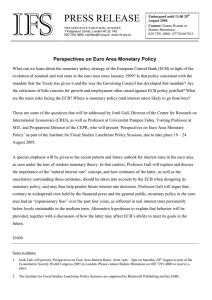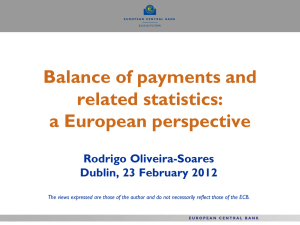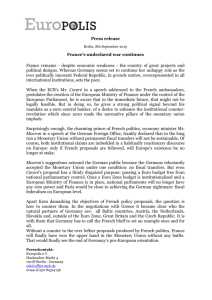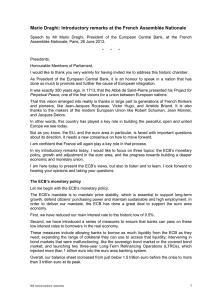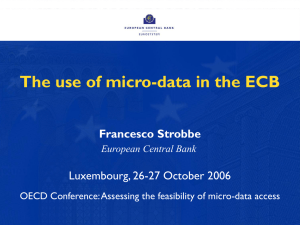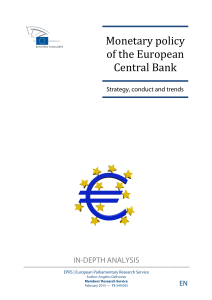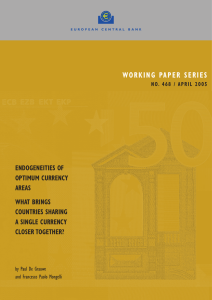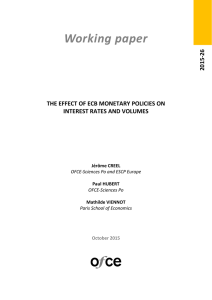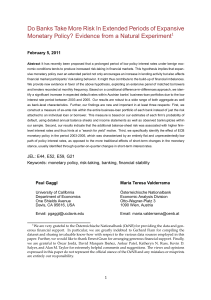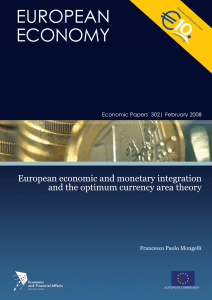ECB initiatives for comprehensive, consistent and timely statistics for the euro area
advertisement
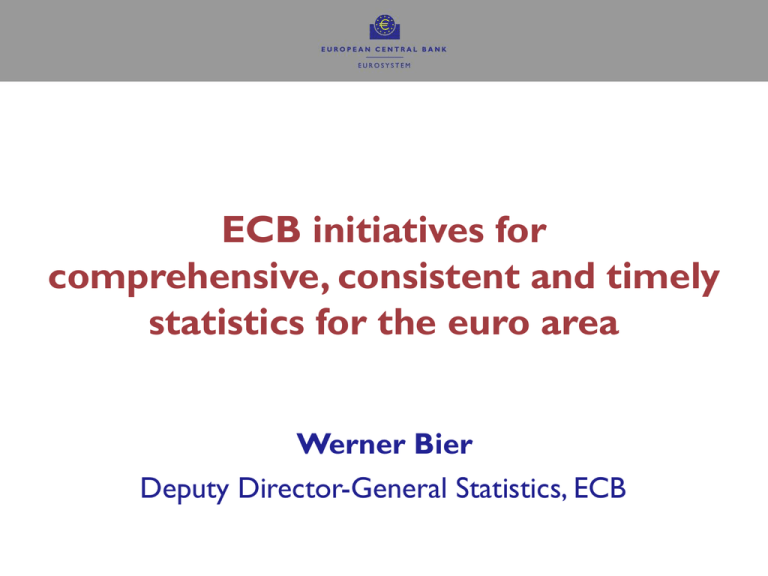
ECB initiatives for comprehensive, consistent and timely statistics for the euro area Werner Bier Deputy Director-General Statistics, ECB Developing euro area monetary and financial statistics under an integrated framework • Legal framework for ECB statistics (European Community Treaty; ESCB/ECB Statute; EU Council Regulation 2533/98); ECB legal acts, MoU with Eurostat • ECB statistics for monetary policy (conduct and operation), payment and security settlements and financial stability purposes • Methodological basis (sector and financial asset/liability classification): SNA 1993/ European System of Accounts (ESA) 1995 • Monetary and financial statistics integrated in the ESA framework; set of macro-prudential indicators on a consolidated group basis • Monetary financial institutions (MFIs ~ banks) detailed balance sheets and interest rates, published monthly within 19 and 26 working days respectively • Insurance Corporations and Pension Funds • OFIs: enhanced statistics on Investment funds (including hedge funds) in 2009 and Financial vehicle corporations and MFI securitisations in 2010 • Centralised Securities Database (CSDB) security-by-security and collection of security-by-security holding statistics Developing euro area economic and financial statistics under an integrated framework • Close cooperation between the European System of Central Banks (ESCB) and the European Statistical System (ESS) • Annual Status Reports on the Information Requirements in the Economic and Monetary Union adopted by EU Ministers • Joint compilation of integrated Euro area accounts (transactions, (financial) balance sheets and other changes); quarterly, aim by 90 days • Joint compilation of integrated Balance of payments statistics (including the international investment position and other changes as well as a geographical breakdown by counterpart country); quarterly, aim by 90 days • “Building-block approach” or vertical integration of primary (macroeconomic) statistics and national/euro area accounts • Development of a joint Business register (for multinationals) Conclusions Comprehensive, consistent and timely statistics support best the economic and monetary analyses and decision-making Globalisation requires also global statistics: comparable statistics worldwide and timely world-aggregates (e.g. quarterly GDP at day-60) Principal Global Economic Indicators (PEGIs): set of economic, financial and macro-prudential indicators for the systemic relevant countries plus related world and regional aggregates compiled by the respective international and supranational institutions Integrated statistics are most efficiently produced by an integrated production process, if possible, based on flexible micro-databases Cooperation with other standard setters beyond the area of statistics (e.g. supervisory authorities, market regulators)
